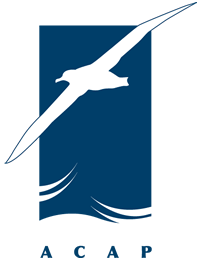Australia’s South East Trawl Fishing Industry Association (SETFIA) has received an Australian Government grant of A$360 000 to continue work on protecting seabirds from fishing boats. The Caring for our Country grant will be used to reduce collisions that occur between seabirds and the cables used to tow trawl nets (click here).
"All trawl vessels in South East Australia and the Great Australian Bight operate with regulated Seabird Management Plans to limit interactions with seabirds. These plans incorporate measures like managing their offal by batching or retaining it (to avoid attracting the seabirds) and using a device that protects seabirds from bumping into trawl cables.
Most vessels currently use large inflatable buoys attached to the vessel to ensure that seabirds do not collide with trawl cables. Although the buoys are effective, they are very difficult to use, and don’t work as well, because they tangle. So we’re keen to use the grant to develop alternative mitigation measures that are at least as effective as the buoys, but are more practical for use on trawl vessels.

The grant will be spent on trials of new methods to avoid harming seabirds, and will be monitored by scientific observers. Observers will be used to monitor and validate the use of water sprayers as seabird deterrents.
Additional scientific observer coverage will be used to test a yet-to-be identified approach to mitigation. Fishermen will be asked to nominate concepts for devices and a panel of experts will select a second device that will be tested.
The grant will also allow several young fishermen from South East Australia and the Great Australian Bight to travel to New Zealand to learn about New Zealand seabird mitigation measures. We hope to that an expert from New Zealand can travel to Australia to help Australian trawl fishermen develop more methods to avoid any harm to seabirds.”
John Cooper, ACAP Information Officer, 18 January 2014

 English
English  Français
Français  Español
Español 


